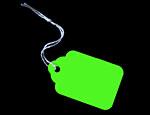Peter Madden, chief executive of Forum for the Future, writes a monthly column for Gristmill on sustainability in the U.K. and Europe.
Can a bag of potato chips point the way to saving the planet?

In the U.K., we have started down the path of putting “carbon labels” on products. Tesco, our biggest supermarket chain, has said they will label every product they sell. The Carbon Trust, a government agency, has already produced a prototype label and is trying it out on shampoo, a fruit juice, and a bag of potato chips.
Clearly we do need to measure and manage carbon. A lot has been done to calculate and reduce the direct climate impacts of companies. Now attention is shifting to the wider climate-change footprint; businesses are looking up and down the supply chain.
Labeling is a great idea in principle. We have seen labels like fair-trade, organic, energy-rating, and marine stewardship engage consumers, change production, and move markets. And on climate change, consumers tell us they want simple, straightforward choices that are guaranteed to make a difference.
The environmental community here is very excited about the prospect of carbon labeling. However, we have already realized that it is going to be much more difficult than we first thought.
What exactly should we measure? Where do we start and stop? The Carbon Trust trials have looked at the “embedded” carbon in a product by the time it reaches the shelves in the shop. So, for example, the potato chips have a little label saying that they have taken 78 grams of carbon to produce. This is complicated enough, because the label has to reflect all the CO2 emitted while growing the potatoes and vegetable oil (pesticides, fertilizers, tractor fuel, etc.) as well as manufacturing, packaging, and transporting the chips.
But if we just measure this “embedded carbon” up to the point where the product is sold, what about the carbon dioxide generated in use? For many items, such as computers, washing machines, or cars, the CO2 produced while the product is being used is way more important than the CO2 in its manufacture. If we just measure embedded carbon, then an old-style incandescent light bulb would score better than an energy-efficient one. This would clearly be ludicrous. However, doing a full life-cycle assessment of every product before it gets a label is also going to be a huge — and expensive — undertaking. You can imagine all the consultants rubbing their hands in anticipation.
Of all the thousands of products out there, where should we start? Do we focus on the top sellers? The easiest to measure? Those that are most intelligible to consumers? Or, as I favor, those products with the biggest carbon impact?
This raises a fundamental question about what we are trying to do with a label. How useful is it to a shopper to be able to compare the climate-change impact of one tin of baked beans over another? And if a bag of potato chips represents 76 grams of carbon, is that a good or bad thing?
I certainly don’t want people thinking that by buying one type of chips rather than another, they have done something meaningful on climate change. It would probably be a million times more effective for them to buy a fuel-efficient car instead of a gas guzzler or to change the way they heat their home.
When the final version of the label starts appearing in our shops, we will also have to get the communication right. Shoppers are likely to be left pretty confused by “grams of carbon dioxide.” You can imagine them asking: “How does a gas weigh grams?” and “What is carbon doing in my chips?”
At the moment in the U.K., we are working hard to hold all the NGOs and big food companies together on this. We want to agree on a single methodology that everyone can follow. This should be simple and cheap enough to do in the real world, but robust enough to be credible. Ideally, we also want to see one universal label for shoppers, one that is independently guaranteed.
In the last big green consumer wave, people lost confidence because of the competing, confusing, and sometimes counterfeit claims made for “environment-friendly” products. This time ’round we have the chance to get it right.



